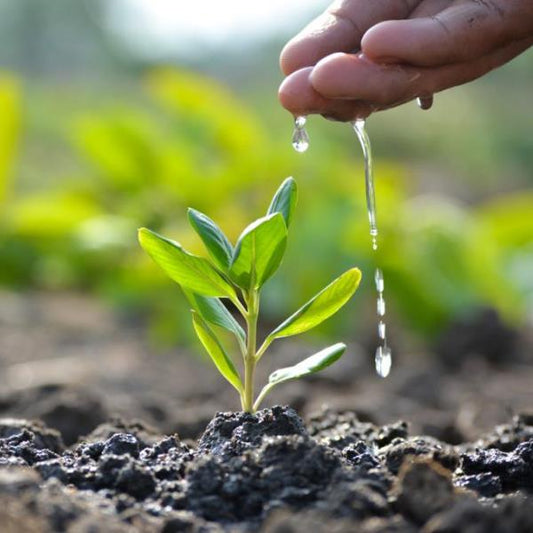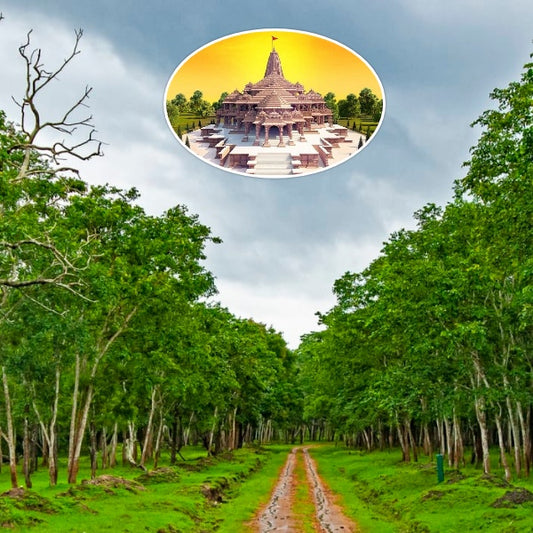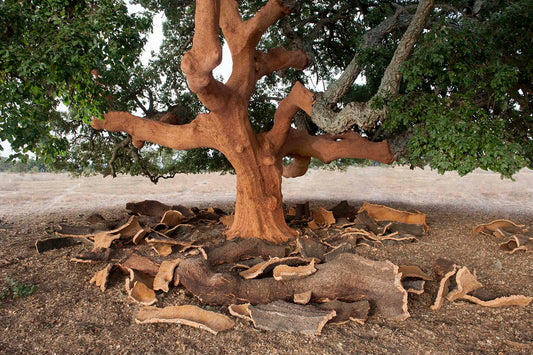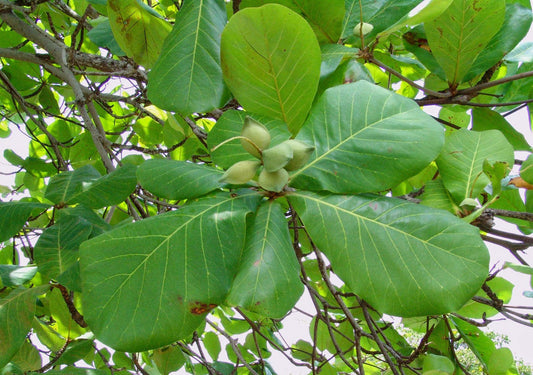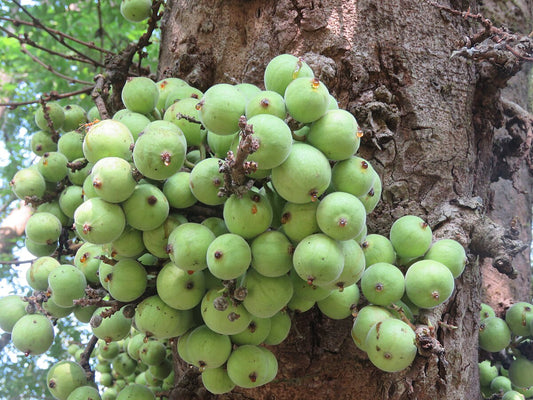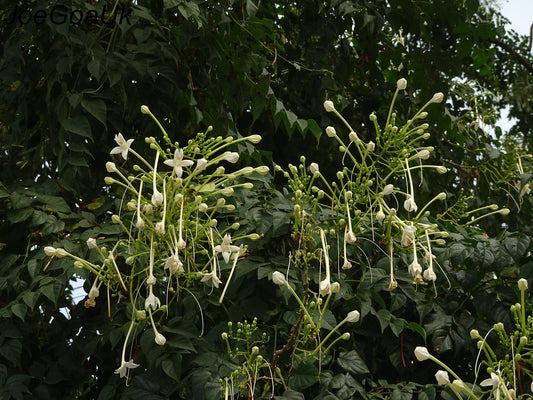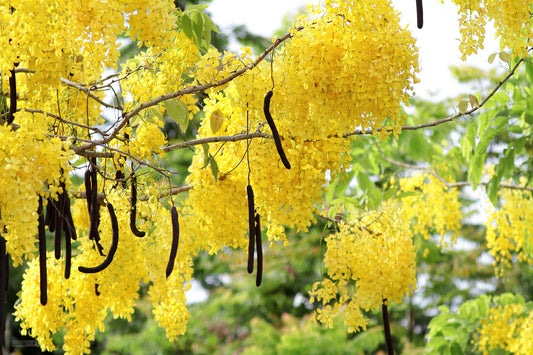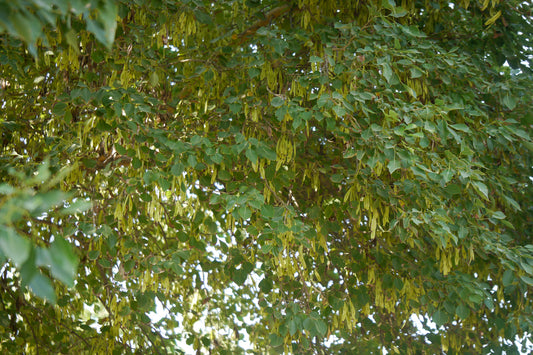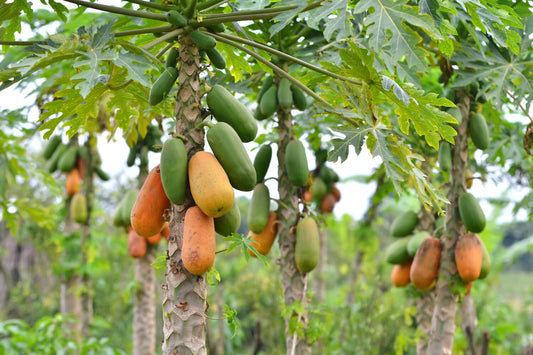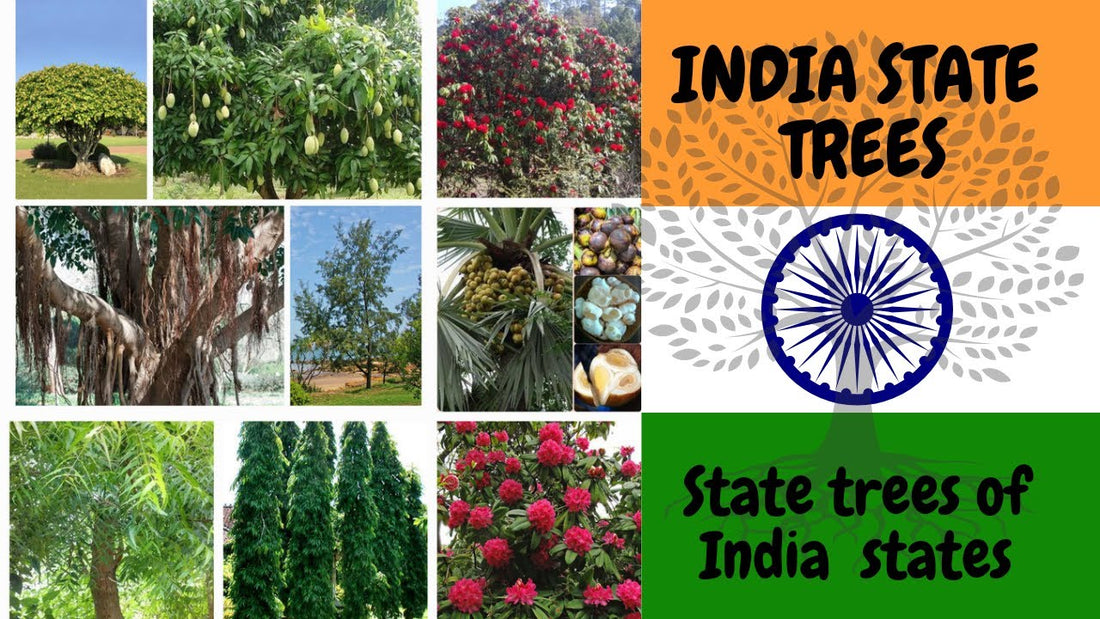

India, often referred to as the land of unity in diversity, boasts a rich tapestry of cultures, languages, and traditions. Amid this diversity, each state has chosen a unique symbol to represent its identity and heritage—the state tree. These trees not only hold cultural significance but also offer Read more
Trending
Trees for Corporates
State Trees
India, often referred to as the land of unity in diversity, boasts a rich tapestry of cultures, languages, and traditions. Amid this diversity, each state has chosen a unique symbol to represent its identity and heritage—the state tree. These trees not only hold cultural significance but also offer a glimpse into the environmental and historical fabric of the region.
Indian states have designated state trees as a way to celebrate and acknowledge the natural diversity, cultural heritage, and ecological significance of their regions. The choice of state trees is often based on a combination of cultural, historical, ecological, and economic factors. Here's why Indian states have state trees:
- Cultural Significance: Many trees hold deep cultural and religious importance in Indian society. State trees often have ties to local myths, legends, and traditions, becoming symbols that reflect the cultural identity of the state.
- Ecological Significance: State trees are often native species that are well adapted to the local environment. They can play a crucial role in maintaining the ecological balance of the region, contributing to biodiversity, soil health, and overall ecosystem resilience.
- Historical Legacy: Some state trees have historical connections, being witness to important events or moments in the state's history. They may have been used in traditional practices or have played a role in the lives of indigenous communities.
- Economic Importance: Certain state trees have economic value due to their timber, fruit, or medicinal properties. Recognizing these trees as state trees can highlight their economic significance and encourage sustainable utilization.
- Environmental Awareness: Designating state trees promotes environmental awareness and conservation. It encourages people to recognize and appreciate the importance of trees in maintaining a healthy environment and addressing climate change.
State Trees of India States
Andhra Pradesh - Neem (Azadirachta indica):
Neem, also known as the "wonder tree," is a botanical treasure for its medicinal properties. With its bitter leaves and astringent properties, it holds a central place in Ayurvedic medicine. Neem's presence as Andhra Pradesh's state tree is a nod to its cultural and therapeutic importance.
Arunachal Pradesh - Hollong (Dipterocarpus macrocarpus):
The evergreen Hollong tree stands tall as the state tree of Arunachal Pradesh. This tree is not only ecologically vital but also holds cultural significance for the indigenous communities of the region. It reflects the lush and diverse forests that adorn the state's landscapes.
Assam - Hollong (Dipterocarpus macrocarpus):
In Assam, the Hollong tree continues to be revered as the state tree, symbolizing resilience and timelessness. It has stood the test of time and witnessed the ebb and flow of history, making it an apt representation of the state's spirit.
Bihar - Peepal (Ficus religiosa):
The Peepal tree, also known as the Bodhi tree, is a symbol of spiritual enlightenment. Under its shade, Lord Buddha is believed to have attained enlightenment. Chosen as Bihar's state tree, the Peepal signifies the state's deep-rooted spiritual heritage.
Chhattisgarh - Sal (Shorea robusta):
Sal, the state tree of Chhattisgarh, is a sturdy and economically significant tree. Its timber is prized, and it plays an essential role in the lives of the local communities. By choosing Sal, Chhattisgarh acknowledges the tree's contribution to both the economy and ecology.
Goa - Matti (Terminalia elliptica):
Matti, locally known as the Indian Laurel, stands as the state tree of Goa. It not only thrives in the state's climate but also symbolizes the region's environment and cultural heritage. This choice reflects the deep connection between the land and its people.
Gujarat - Mango (Mangifera indica):
The Mango tree, with its delicious fruit, holds a special place in the hearts of many. It represents prosperity, and in Gujarat, it's the state tree, reflecting the state's aspiration for growth and abundance.
Haryana - Peepal (Ficus religiosa):
Just like in Bihar, Haryana also reveres the Peepal tree. Its choice as the state tree reinforces the spiritual and cultural values that this tree symbolizes across India.
Himachal Pradesh - Deodar (Cedrus deodara):
The Deodar tree is a majestic conifer that dominates the landscapes of Himachal Pradesh. With its towering presence, it captures the essence of the state's pristine mountain environment and is a natural choice for the state tree.
Jharkhand - Sal (Shorea robusta):
Much like Chhattisgarh, Jharkhand also honors the Sal tree as its state tree. Sal's robust presence in the state signifies its ecological importance and its role in sustaining local communities.
Karnataka - Sandalwood (Santalum album):
Karnataka, known for its sandalwood-rich forests, proudly declares Sandalwood as its state tree. This fragrant tree has deep-rooted cultural, medicinal, and economic significance in the state.
Kerala - Coconut Palm (Cocos nucifera):
The Coconut Palm, known as the "tree of life," graces the coastal landscapes of Kerala. Its choice as the state tree highlights its role in providing sustenance, shelter, and cultural significance to the state.
Madhya Pradesh - Banyan (Ficus benghalensis):
The Banyan tree, with its sprawling canopy and aerial roots, is chosen as the state tree of Madhya Pradesh. It symbolizes the state's rich biodiversity and its interconnectedness with nature.
Maharashtra - Mango (Mangifera indica):
Mango, the king of fruits, also finds its place as the state tree of Maharashtra. Just like in Gujarat, the choice reflects the state's aspiration for prosperity and abundance.
Toon, a hardwood tree, is the state tree of Manipur. Its selection underlines its ecological and economic importance, as well as its cultural relevance.
Meghalaya - White Teak (Gmelina arborea):
White Teak, locally known as "Tingkham," stands as the state tree of Meghalaya. It's a nod to the state's rich forest cover and its significance for local communities.
Mizoram - Mesua (Mesua ferrea):
The evergreen Mesua tree is Mizoram's state tree, mirroring the state's lush landscapes. Mesua's presence is a testament to the state's vibrant ecosystem.
Nagaland - Alder (Alnus nepalensis):
Alder, known for its nitrogen-fixing ability, is Nagaland's state tree. Its ecological contribution reflects the state's commitment to environmental conservation.
Odisha - Sacred Fig (Ficus religiosa):
The Sacred Fig, another name for the Peepal tree, finds its place as Odisha's state tree. Its choice embodies the spiritual and cultural values of the state.
Punjab - Sheesham (Dalbergia sissoo):
Sheesham, a sturdy and valuable tree, is Punjab's state tree. Its presence symbolizes the state's agricultural heritage and the role of trees in supporting farming communities.
Rajasthan - Khejri (Prosopis cineraria):
Khejri, well-adapted to arid conditions, is Rajasthan's state tree. Its selection showcases its resilience and its significance in desert ecosystems.
Sikkim - Rhododendron (Rhododendron niveum):
Rhododendron, with its vibrant flowers, stands as Sikkim's state tree. Its colorful blooms mirror the state's natural beauty.
Tamil Nadu - Palm (Borassus flabellifer):
Tamil Nadu's state tree is the Palm tree, an icon of coastal landscapes. Its selection recognizes its role in providing resources and cultural significance.
Telangana - Jammi Chettu (Prosopis cineraria):
Jammi Chettu, commonly known as Prosopis cineraria, is Telangana's state tree. Its presence reflects its cultural and ecological importance in the region.
Tripura - Agar (Aquilaria malaccensis):
Agar, known for its aromatic resin, is Tripura's state tree. Its choice signifies the state's unique forest resources.
Uttar Pradesh - Ashoka (Saraca asoca):
Ashoka, revered for its ornamental and cultural value, stands as Uttar Pradesh's state tree. Its name encapsulates a sense of harmony and well-being.
Uttarakhand - Buransh (Rhododendron arboreum):
Buransh, or Rhododendron, is Uttarakhand's state tree. Its bright red flowers represent the state's pristine mountain landscapes.
West Bengal - Chatim (Alstonia scholaris):
Chatim, with its fragrant white flowers, is West Bengal's state tree. Its presence reflects the state's natural diversity and cultural heritage.
You may also like
Corporate Plantations
Indian state trees
Discover the diverse array of trees selected as symbolic representations for various Indian states. Each state's choice reflects its unique blend of cultural, ecological, and historical significance, offering insights into the regional identity and heritage.
Cultural symbolism
Delve into the profound cultural and religious meanings attributed to state trees across India. These trees often have deep-rooted connections to local myths, legends, and traditions, serving as powerful symbols that resonate with communities and shape their cultural identities.
Ecological impact
Explore the essential ecological roles played by state trees in maintaining the health and balance of ecosystems. From providing habitat and food for wildlife to stabilizing soil and regulating climate, these trees are crucial contributors to environmental sustainability.
Historical legacy
Uncover the historical significance and heritage associated with state trees, which have witnessed and been intertwined with significant events and traditions throughout India's history. These trees serve as living reminders of the past and the cultural evolution of each state.
Economic value
Understand the economic importance of state trees, which extends beyond their cultural and ecological significance. Many state trees have commercial value, providing resources such as timber, fruits, and medicinal products that contribute to local economies and livelihoods.
Environmental awareness
Explore how the designation of state trees fosters environmental consciousness and encourages conservation efforts. By recognizing the importance of these trees, states promote a deeper understanding of the value of biodiversity and the need for sustainable environmental practices.
Ayurvedic significance
Learn about the therapeutic properties and medicinal uses of state trees in Ayurvedic medicine. These trees have been integral to traditional healing practices for centuries, offering remedies for various ailments and promoting holistic well-being.
Indigenous biodiversity
Appreciate the representation of indigenous flora through state trees, which reflect the rich biodiversity of each Indian state. These trees highlight the unique natural heritage and ecosystems found across the country, showcasing the beauty and importance of native plant species.
Traditional practices
Understand the role of state trees in traditional practices and rituals, which have been passed down through generations. These trees are often central to cultural ceremonies, festivals, and spiritual beliefs, connecting communities to their ancestral customs and wisdom.
Symbolism and identity
Explore how the selection of state trees embodies the symbolic representation and collective identity of Indian states. These trees serve as powerful symbols of pride, unity, and resilience, reflecting the values and aspirations of the people they represent.
FAQ
What are Indian state trees and why are they significant?
Indian state trees are specific tree species designated as symbols for different states in India. They hold cultural, ecological, and historical significance, serving as representations of the region's identity and heritage.
How are state trees in India chosen and designated?
State trees are typically chosen through a process that considers cultural, ecological, historical, and sometimes economic factors. State governments or legislative bodies may officially designate a particular tree as the state tree through legislation or official declarations.
What factors contribute to the selection of a specific tree as a state symbol?
Factors such as cultural importance, ecological significance, historical relevance, economic value, and indigenous biodiversity are often considered when selecting a state tree. Additionally, the tree's symbolism and its connection to the identity of the region play crucial roles in the decision-making process.
Can you explain the cultural and religious symbolism associated with Indian state trees?
Indian state trees often have deep-rooted cultural and religious symbolism, being associated with local myths, legends, and traditions. They may hold significance in religious rituals, festivals, and spiritual beliefs, serving as sacred symbols for communities.
What ecological roles do state trees play in their respective regions?
State trees play vital ecological roles, such as maintaining biodiversity, providing habitat for wildlife, stabilizing soil, regulating climate, and contributing to overall ecosystem health and resilience.
Are there any historical connections or significance linked to state trees?
Many state trees have historical connections, having witnessed significant events or moments in the region's history. They may have been used in traditional practices or have cultural significance dating back centuries.
How do state trees contribute to the economic value of their regions?
Some state trees have economic value due to their timber, fruit, medicinal properties, or other commercial uses. They contribute to local economies by providing resources for industries such as agriculture, forestry, and traditional medicine.
What measures are taken to promote environmental awareness through state trees?
The designation of state trees often promotes environmental awareness by highlighting the importance of trees in maintaining a healthy environment, addressing climate change, and conserving natural resources.
What are some traditional practices or rituals involving state trees?
State trees are often central to traditional practices and rituals, being revered in ceremonies, festivals, and cultural events. They may also have specific cultural or spiritual significance for local communities.
How do state trees reflect the identity and diversity of India's different regions?
State trees reflect the unique identity and diversity of India's regions by symbolizing their cultural heritage, ecological landscapes, historical legacies, and indigenous biodiversity. They serve as iconic representations of each state's distinctiveness and pride.
Most Popular
Connect with us
-
👥 Corporates
If you are looking for:
- 🌲 Tree Plantation Events
- 📊 CSR Projects
📧 corporate@growbilliontrees.com
📞 +91 9699723523
💬 WhatsApp (Only): +91 9370599291
🕒 Mon - Sat | 10am - 7pm IST
-
🧩 Tree Plantation NGOs
If you are looking for:
- 💰 Financial Assistance
- 🤝 Operational Support
📧 support@growbilliontrees.com
📞 +91 9699723523
💬 WhatsApp (Only): +91 9370599291
🕒 Mon - Sat | 10am - 7pm IST
-
🌼 Individuals
If you are looking for:
- 👥 Group Tree Plantation Drive
- 🌳 Bulk Tree Plantation
📞 +91 9699723523
💬 WhatsApp (Only): +91 9370599291
🕒 Mon - Sat | 10am - 7pm IST



